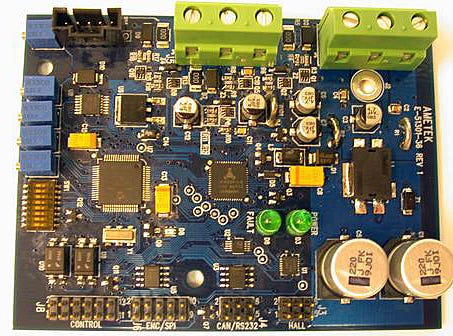March 11, 2015
(This story originally ran in Design News)
When selecting controllers for brushless DC (BLDC) motor
Design News controllers.jpg
s, many variables will come into play for designers to consider within the context of an application. Some of the most important are described in this article.Dynamic response
For optimum dynamic performance, the motor controller's dynamic response should exceed the electrical and mechanical time constant of the motor and load.
The motor dynamic torque response will depend on both the bandwidth of the controller's current regulating loop and the motor inductance (electrical time constant). Motor controllers with a motor current feedback loop will generally provide faster dynamic torque response, but they may require tuning the motor control current loop to achieve ideal performance. Low-inductance motors generally require high bandwidth to limit current ripple frequency and amplitude, along with prohibiting wide excursions during fault conditions.
The motor dynamic speed response will be dependent on the motor and load inertia (mechanical time constant). Motors with high inertia require low velocity loop bandwidth. Conversely, motors with low inertia require high velocity loop bandwidth to generate the appropriate changes in speed demand.
As in both instances of control, transducer type (current or velocity), accuracy, and resolution play a role in motor performance.
To see the entire story, click here:
About the Author(s)
You May Also Like


